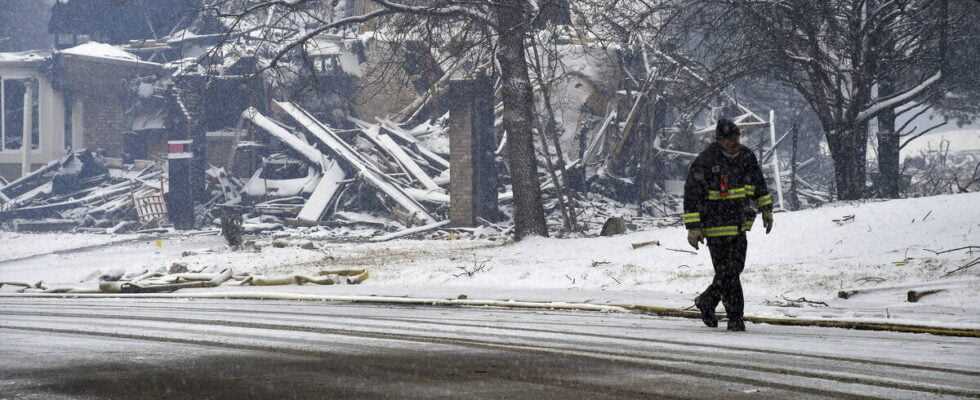Fire and water. Water and fire. Colorado has experienced in two days a succession of elements as devastating as it is improbable, but where global warming is the main accused. On New Year’s Eve, the fires that had destroyed “in the blink of an eye” entire neighborhoods in the US state on Friday were mostly extinguished by heavy snowfall that smothered the last embers.
At least 500 homes have gone up in smoke and tens of thousands have had to flee, but no deaths have so far been reported. “a miracle” according to Governor Jared Polis. The damage is no less striking: on aerial images, entire streets are little more than piles of smoking ash. The fire, unlike previous fires, affected suburbs and not just rural areas.
“Families only had a few minutes to put everything they could – their animals, their children – in the car and leave”Jared Polis said at a press conference on Friday. This happened “in the blink of an eye”. Impressive flames tore the sky, fanned by strong winds, which blew up to 160 km / h Thursday. The fire was reportedly caused by power lines falling on arid soil.
The final number of houses destroyed is not yet known. Boulder County Sheriff Joe Pelle estimated it to be over 500 on Friday, saying he would “not be surprised if it was over 1,000.” The fire is consumed “mosaic”, sparing certain neighborhoods to devastate neighboring houses, he explained. “When you see the devastation, it’s incredible that we don’t have a list of 100 missing persons, but we don’t have it ”, whispered the sheriff.
In an appeal with Governor Polis, President Joe Biden promised that “Everything would be done to provide immediate assistance to the people and populations affected”, according to the White House. The President ordered the payment of federal aid to Colorado.
This snow will “really help us”
On Friday, a layer of snow settled on the ashes of these devastating fires, in stark contrast to the furnace of the day before. The US Weather Service (NWS) has placed part of this mountainous western state on winter storm alert, forecasting heavy rainfall in the coming days. This snow goes “Really help us”, welcomed Joe Pelle, saying he no longer expected the fire to develop.
Part of the evacuation orders were lifted overnight by local authorities. But places like Superior, with 13,000 inhabitants, are still off limits. Residents, along with some 20,000 residents of Louisville, have been ordered to boil tap water or use bottles, with cities using untreated water to fight fires.
Global warming
Like much of the American West, Colorado, an already arid state, has been struggling for several years with exceptional drought. “Everything is dry and brittle in the state, details Keith Musselman, hydrology specialist at the University of Colorado, on MSN. If you add to this extreme drought, 2 or 3 degrees Celsius more, it dries up the land even more and everything becomes flammable again. “
With global warming, the intensity and frequency of drought and heatwave episodes are likely to increase further, continuing to create ideal conditions for forest or bush fires. In recent years, the American West has experienced unprecedented fires, particularly in California and Oregon.
In the case of Colorado, the flames progressed at lightning speed due to a huge mass of air coming from the mountains. The phenomenon resembles a wave of water passing over a rock, explains the Denver Post : When the water rises and falls downwards, it creates ripples which accelerate as they approach the plains.
High winds are not uncommon in the state and Boulder weather services issued a classic alert Wednesday night before upgrading it Thursday morning. “Predicting the winds and their exact speed is probably the most complicated task for meteorologists”, David Barjenbruch, chief forecaster for the city of Boulder, told Denver Post columns.
For Daniel Swain, meteorologist at Ucla University, he is “Hard to believe”that these fires occur in December, a period usually not conducive to this type of event in the region. “But take a record-breaking heat and drought fall, only two inches of snow so far this season, and add a storm with extreme downward gusts … and the result is extremely dangerous, very fast moving fires.The researcher tweeted.
